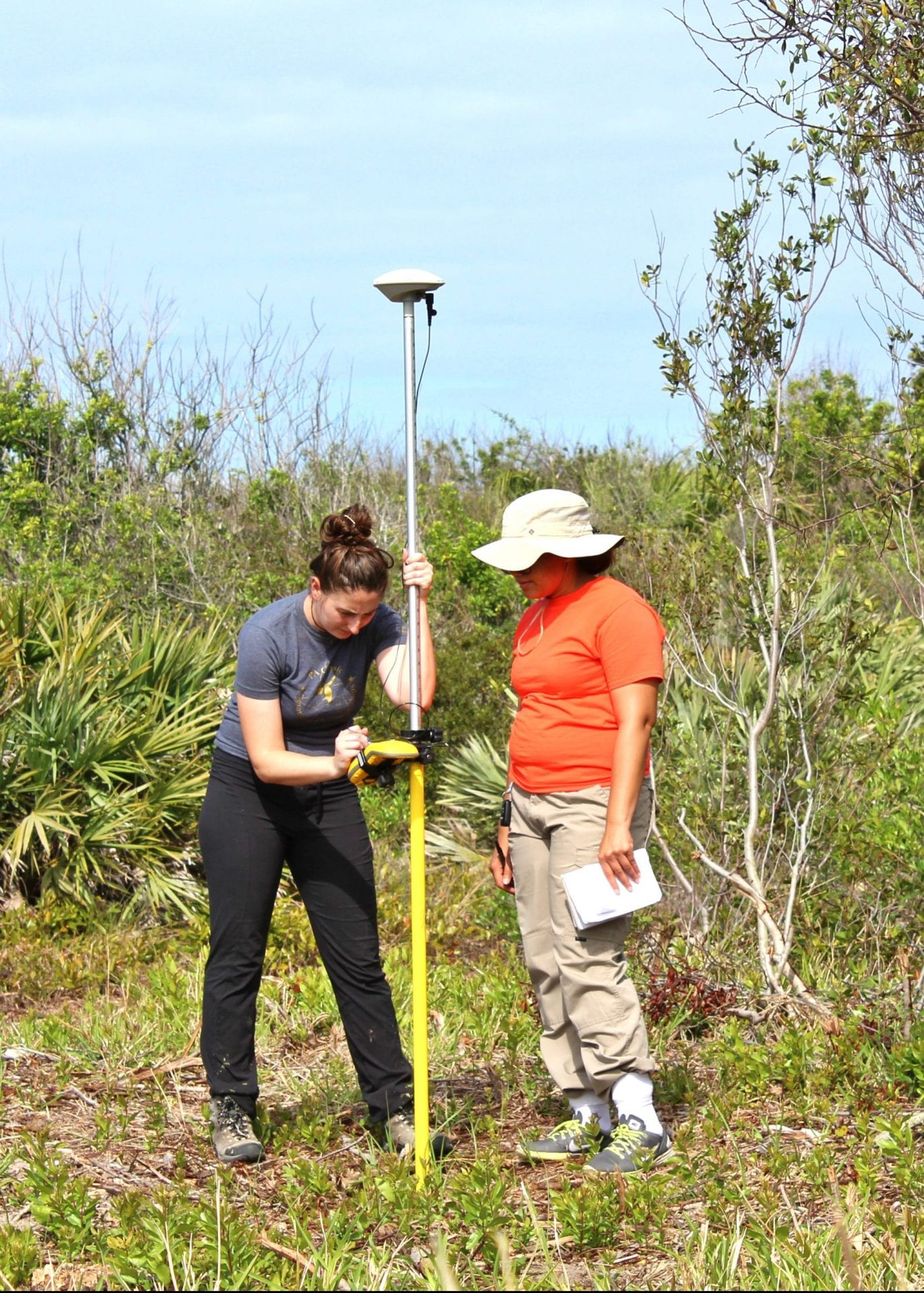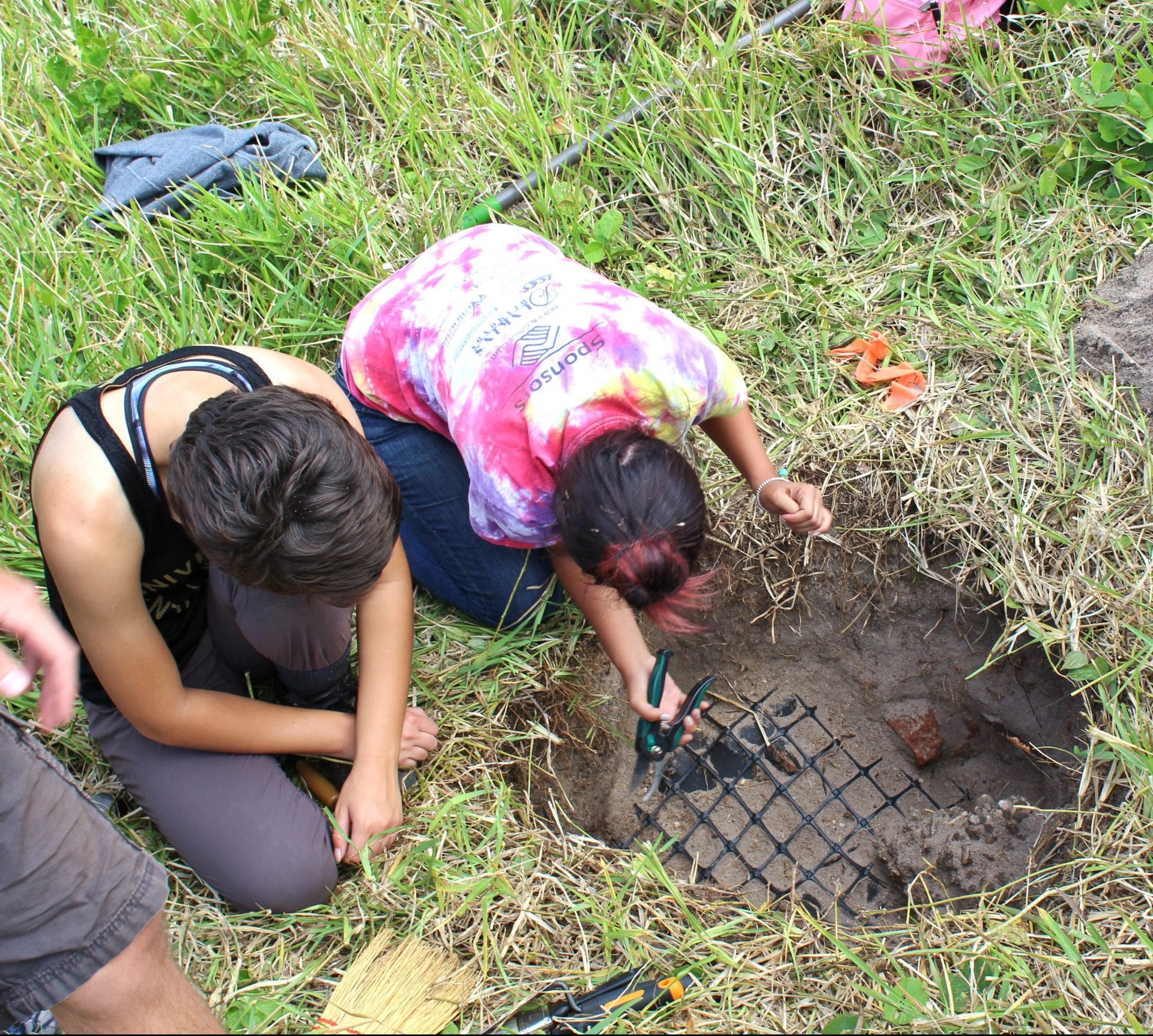Excavating New Opportunities

University of Central Florida’s Department of Anthropology dug up a new Experiential Learning program last spring.
Anthropology Associate Professor and Undergraduate Coordinator Sarah Barber, Ph.D., created the program with Tom Penders, an archaeologist and cultural resources manager at the Cape Canaveral Air Force Station.
The program was created because Barber’s students were clamoring for archaeological field research opportunities. Her goal was to work with the needs of UCF’s large, urban student population to make research more accessible.
The project was local, provided first-hand professional experience and gave students a taste of archaeology right here in Florida. And the students were able to put their research efforts toward a good cause.
 “The program was an archaeological excavation on the Cape Canaveral Air Force Station,” Barber said. “Students had the opportunity to conduct original, professional research at archaeological sites on-base that are at risk of destruction due to sea level rise.”
“The program was an archaeological excavation on the Cape Canaveral Air Force Station,” Barber said. “Students had the opportunity to conduct original, professional research at archaeological sites on-base that are at risk of destruction due to sea level rise.”
Students from the anthropology department bring valuable expertise to archaeological projects such as these with skills ranging from geospatial computing, interviewing techniques for qualitative research, archaeological field methods, laboratory sample preparation, and more.
“Many of these skills were evident among the interns last spring,” Barber said. “They worked in teams to produce research posters for the Showcase of Undergraduate Research, they had to work together in the field, and they had to be professional working for a supervisor on the military base.”
And the students’ hard work didn’t go unnoticed. One of the two posters presented at the showcase won the Judge’s Choice Social Sciences award.
The anthropology students studied two sites: one pre-Columbian the other historic. Their findings helped conclude that the pre-Columbian site was much larger than previous studies had suggested. The results suggested it was a village site that extended well north of the limits that previous researchers had put on the site. They also determined how the Cape Canaveral Lighthouse, which was relocated to a new location in the 1880s, was moved.
Most of the sites have never been properly tested and the boundaries of the sites have never been accurately defined. This allows Penders to tell the Air Force where they can and cannot build.
According to Penders, the internship coordinator, the research is important because the first of these excavation sites will be gone in 20-25 years from erosion and inundation due to climate change. The goal was to document the archaeological sites before they disappear.
“We will more than likely be the last archaeologists to look at these sites,” he said. “So we need to gain as much information from them as we can.”
During the program, the student participants excavated, sifted sediment and pulled artifacts out of the sediment. Some students used high-accuracy GPS and surveying equipment such as a laser total station to generate accurate maps of the sites, the locations of the excavations and modern features like roads. These maps and the materials they excavated are all that will remain of the sites after the sea has its way with them, so they are important records of Florida’s European and Native American past.
“The students also learned about the complexities of conducting field research, how to manage teams of people, logistics, the legal requirements of archaeological and environmental impact assessments, and so on,” Barber explained. “Federal law requires that all cultural resources, including archaeological sites, be assessed for ‘impact’ if development is to occur on federal land.”
The program is in its first year and had just under a dozen anthropology majors who participated. And student responses to the program have been very positive.
Anthropology graduate, Jesann Gonzalez, chose the program as a way to gain more experience in the field and develop skills to put on her resume. Her specific research goal was to focus on displaying the archaeological site boundaries, the spring 2017 season’s work and major site components on a map.
“My research sought to set a foundation for future research at the site by creating a visual understanding of space in relation to the prominent features such as the historical graves within the cemeteries and the Native American Mound,” she said.
Gonzalez and fellow participants had preparation that helped in conducting such excavations.
“UCF offers classes like GIS and Archaeological Method and Theory, which helped prepare me with the foundational skillset I needed to advance within  the internship,” she explained. “The professors in the anthropology department were also a great toolset in advising me through my research.”
the internship,” she explained. “The professors in the anthropology department were also a great toolset in advising me through my research.”
Gonzalez has clear advice for students who may be interested in pursuing an experiential learning opportunity.
“I would recommend students who are interested in trying it out to just go for it!”
Penders is happy about the program so far and can’t wait to meet more bright students.
“I have worked with students from the UCF anthropology department in various capacities since 2010. I can say they are some of the best I have worked with,” he said. “I’m looking forward to years of collaboration with the Department of Anthropology at UCF.”
To learn more about Experiential Learning click here.
